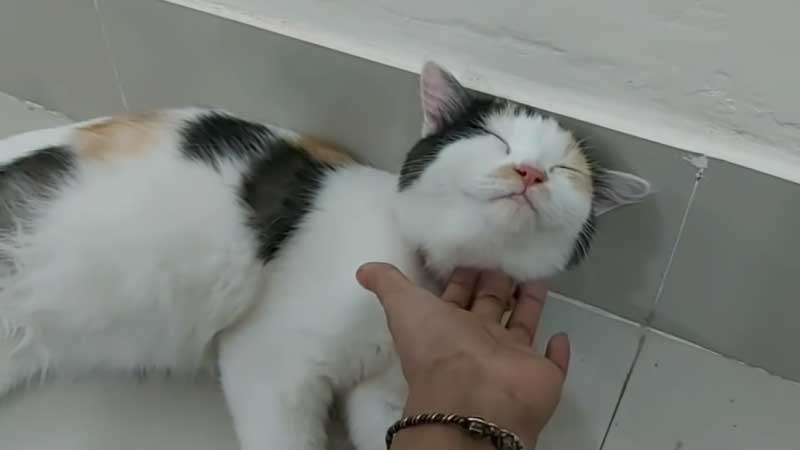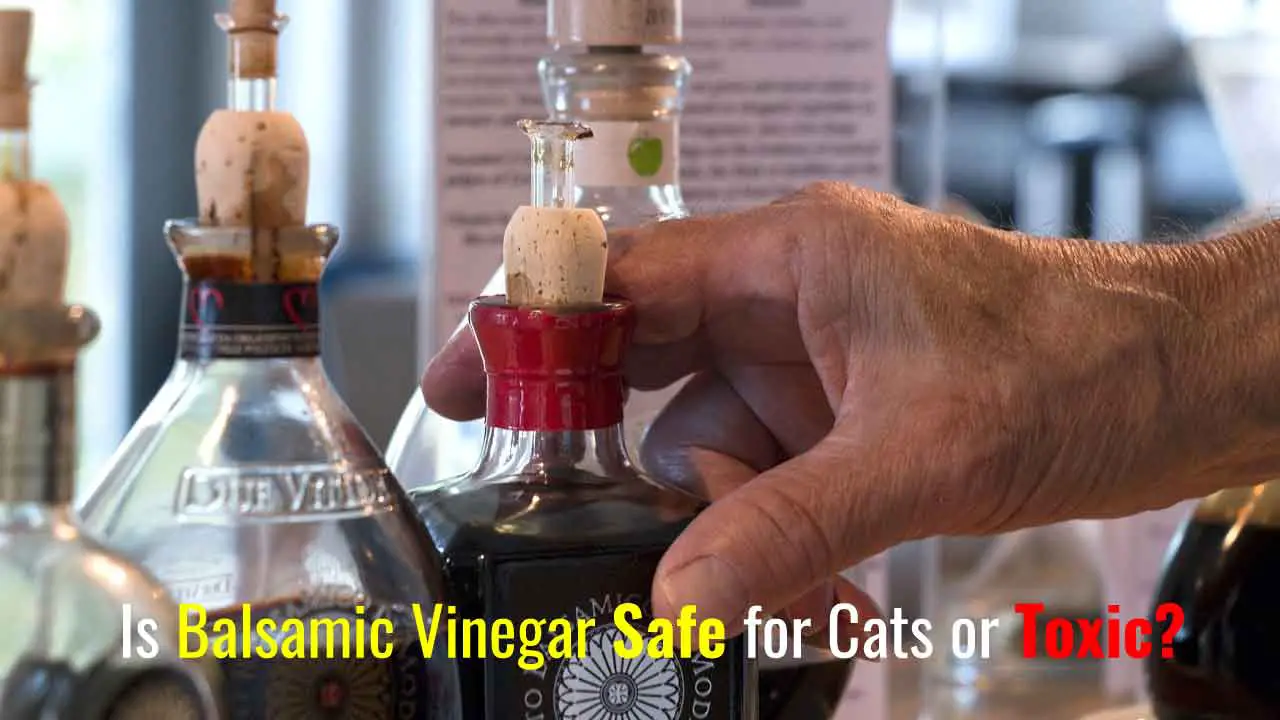If you’re a passionate cat owner, spotting anything unusual on your feline friend’s coat or skin can quickly turn into a Sherlock Holmes-worthy investigation. Is it just a piece of dirt, or could it be something more? The plot thickens in the curious case of cat acne vs flea dirt, as both can leave recognizable marks on your kitty’s skin and fur.
Cat acne is a skin condition with blackheads and pimple formations usually found on a cat’s chin or lip area. On the other paw, flea dirt resembles tiny black specks that are, in fact, flea feces and indicate a pesky parasite problem. Want the detailed scoop? Keep your whiskers twitching and read on, as we’re about to go deeper into the world of cat skincare, uncovering the dark secrets of cat acne vs flea dirt one at a time!
Table of Contents
What is Cat Acne?

Cat acne, also known as feline acne, is a common skin condition in cats that can affect them at any age and any cat breed. It’s akin to human acne and is characterized by the presence of blackheads, whiteheads, and sometimes even red, inflamed bumps on the cat’s chin, lips, and sometimes around the face.
Common Causes
- Poor Grooming: Some cats may not groom as effectively, leading to oil build-up.
- Plastic Food Dishes: Plastic can harbor bacteria which may contribute to acne when the cat’s chin comes into contact with the dish during feeding.
- Excess Sebum Production: Just like in humans, excess oil production can cause pores to become clogged.
- Stress: Elevated stress levels can alter hormone balances, which may lead to skin issues like acne.
- Allergies: Whether food or environmental, allergies can manifest in the skin, causing acne.
- Hormonal Imbalances: Hormonal changes or imbalances can lead to increased sebum production and acne.
- Genetics: Some cats may be genetically predisposed to acne.
Signs of Cat Acne
- Blackheads (Comedones): These small, black spots are the hallmark of feline acne.
- Redness and Swelling: The area around the chin and lips may appear red and swollen.
- Pustules: Similar to pimples, these can indicate more severe acne.
- Hair Loss: In some cases, acne can lead to hair loss in the affected area.
- Itching and Scratching: Cats may scratch at their chins if acne is causing discomfort.
- Secondary Infection: If left untreated, acne can lead to bacterial infections which might exacerbate the symptoms.
What is Flea Dirt?

Flea dirt is the polite term for flea feces, which is a clear indicator of flea activity on your cat. These tiny specks may look like random bits of soil or pepper scattered through your cat’s fur, but they’re actually a mix of blood and debris from the biting nuisances we know as fleas.
How Flea Dirt is Related to Flea Infestations
Flea dirt serves as a tell-tale sign of an active flea infestation. Fleas feed on your cat’s blood, and what comes out the other end is this so-called “dirt.” Finding flea dirt is a definite confirmation that fleas are living on your pet, feasting away, and setting up shop in your home.
Not only does it signify their presence, but it also implies that they’ve been there long enough to eat, digest, and excrete, which means they could be multiplying rapidly.
Signs of Flea Dirt on Your Cat
Spotting flea dirt involves more than a quick glance. Here’s what you should look out for:
- Small Black Specks: Often visible on the skin, beneath your cat’s fur. The best places to check are less accessible areas for your cat, like the back of the head and the base of the tail.
- Reddish-Brown Stains: When you wet these specks, they’ll dissolve, leaving a reddish-brown stain, due to the blood content.
- Excessive Scratching and Grooming: Your cat may be irritated by the fleas and overgroom or scratch themselves to try and alleviate the discomfort.
- Visible Fleas: While searching for flea dirt, you may also see the fleas themselves hopping about your cat’s body.
- Flea Eggs: These tiny white specks might also be found alongside flea dirt, indicating a breeding population.
To confirm that what you’ve found is indeed flea dirt, you can carry out a simple test. Place the black specks on a white paper towel and apply a drop of water. If the specks turn a reddish-brown color, it’s a positive sign of flea dirt.
Cat Acne vs Flea Dirt: Detailed Key Differences
When trying to discern whether your cat is suffering from acne or is dealing with a flea problem, there are several key differences to look out for. Here’s a comparison chart that breaks down the primary distinctions:
| Feature | Cat Acne | Flea Dirt |
|---|---|---|
| Location on Body | Primarily found on the chin and lip area, but can appear anywhere on the body. | Mostly found on the back half of the cat’s body, around the base of the tail, neck, and head. |
| Appearance | Looks like blackheads or whiteheads; may progress to red, inflamed bumps. | Small, dark brown or black specks that resemble grains of sand or pepper. |
| Texture | Bumps can be felt under the skin; might be crusty if infected. | Fine to the touch; turns red or brown when wet due to blood content. |
| Associated Symptoms | Swelling, redness, possible hair loss in the affected area; cat may show signs of discomfort. | Itching, excessive grooming, potential allergic reactions to flea bites; may lead to hair loss due to scratching. |
| Response to Treatment | Often improves with improved hygiene or topical treatments. | Requires flea eradication treatments on the pet and in the environment. |
| Secondary Signs | Can become secondarily infected leading to more severe skin issues. | May be accompanied by live fleas, flea eggs, and signs of anemia in severe infestations. |
Behavioral Responses
Cats with acne may not exhibit much behavioral change unless the acne is itchy or painful, while cats with flea dirt will typically scratch, lick, or bite the affected areas.
Seasonality
Flea infestations and the presence of flea dirt can be more seasonal, often peaking in warmer months, whereas cat acne can occur at any time.
Age of Cat
Acne can be seen in cats of any age but is more common in young and middle-aged cats. Flea dirt can be found on cats of all ages but is often more problematic in kittens due to their underdeveloped immune systems.
Environmental Factors
Cat acne can sometimes be linked to stress or hormonal changes and may not be as influenced by the cat’s environment. In contrast, flea dirt is directly related to the cat’s surroundings and the presence of fleas in the environment.
If you compare these characteristics, you’ll have a better idea of whether you’re dealing with cat acne or flea dirt, and you’ll be able to treat your cat more effectively. Always consult with a vet for an accurate diagnosis and treatment plan.
How to Tell If Your Cat Has Acne or Fleas
Early identification of cat skin conditions is essential for treatment and relief. Here’s how you can differentiate between cat acne and flea dirt and understand when it’s time to seek a vet’s expertise.

Cat Acne
- Visual Inspection: Look for small black dots on your cat’s chin or lip area, similar to blackheads. In more severe cases, there might be redness, swelling, and pustules.
- Physical Touch: Feel the area for any bumps. Cat acne may be slightly raised and might feel gritty or crusty, especially if there’s a secondary infection.
- Note the Area’s Condition: Check if the skin is oily or if there’s hair loss, which often accompanies cat acne.
- Monitor Behavior: Observe your cat for any changes in behavior that indicate discomfort in the chin area, like reluctance to being touched or excessive scratching.
Cat Flea Dirt
- Close Examination: Part your cat’s fur in several places, especially around the neck, back, and base of the tail. Look for small black specks against the skin.
- The Wet Paper Towel Test: Place some specks on a wet paper towel. If they turn a reddish-brown color, it’s flea dirt, which is digested blood.
- Flea Comb: Use a fine-toothed comb to brush through your cat’s fur, paying close attention to the base of the tail and neck. The comb may pick up flea dirt and possibly live fleas.
- Environmental Check: Look for signs of fleas or flea dirt in areas where your cat spends a lot of time, such as their bedding or favorite resting spots.
When to Consult a Veterinarian
Early intervention from a veterinarian can prevent both conditions from escalating and ensure your cat remains comfortable and healthy. Vets can provide precise diagnoses and recommend treatment plans that may include medicated shampoos, topical ointments, or oral medications for acne, as well as a range of options like topical treatments, oral medications, or environmental controls for flea infestations. If you see these symbols, then you must go to the veterinarian.
Persistent or Worsening Symptoms
If the acne or flea dirt doesn’t improve with initial at-home care, or if symptoms worsen, it’s time to call the vet.
Secondary Symptoms
Infections, significant hair loss, or behavior changes like lethargy or decreased appetite warrant a professional evaluation.
Uncertainty
If you’re unsure whether the issue is cat acne, flea dirt, or something else entirely, a vet visit is necessary to avoid complications.
Safe Treatment Plan
Before starting any treatment, especially with over-the-counter products, consult a vet to avoid exacerbating the condition or causing harm to your cat.

Prevention Tips for Cat Acne
- Regular Cleaning: Keep your cat’s feeding area and bowls clean. Wash the bowls daily with hot, soapy water, especially if they’re plastic, which can develop scratches that harbor bacteria.
- Monitor Chin Hygiene: Clean your cat’s chin after meals, especially if they are messy eaters, to prevent food buildup that can contribute to acne.
- Balanced Diet: Feed your cat a healthy, balanced diet to maintain overall skin health.
- Avoid Plastic: Use stainless steel, glass, or ceramic bowls instead of plastic to reduce the risk of bacteria.
- Stress Reduction: Minimize stress in your cat’s environment as stress can exacerbate acne outbreaks.
- Regular Grooming: Brush your cat regularly to distribute natural skin oils and avoid the buildup of sebum that can clog pores.
- Veterinary Check-ups: Regular wellness visits to the vet can help catch and address any signs of acne before they become a significant issue.
Prevention Tips for Flea Infestation
- Consistent Flea Control: Use year-round flea prevention treatments as recommended by your vet, including topical treatments, oral medications, and flea collars.
- Home Maintenance: Vacuum frequently to remove fleas, larvae, and eggs from carpets, upholstery, and cat bedding. Dispose of the vacuum bag immediately after cleaning.
- Regular Pet Checks: Regularly check your cat’s coat for fleas and flea dirt, especially during the warmer months when fleas are most active.
- Keep Wildlife Away: Discourage wildlife from coming into your yard, as they can carry fleas.
- Maintain Outdoor Areas: Trim lawns and bushes to reduce the flea-carrying wildlife habitat and exposure to your cat.
- Flea-proof Your Home: Treat your home with flea-preventive sprays or powders, especially in areas where your cat spends a lot of time.
- Prompt Treatment: If you have multiple pets, treat them all for fleas at the same time to prevent cross-infestation.
- Isolate Infected Pets: If one pet has fleas, isolate them until they are fully treated and the fleas are gone to prevent spreading to other pets.
Frequently Asked Questions (FAQs)
What can be mistaken for cat acne or flea dirt?
Cat acne can sometimes be mistaken for mites, fungal infections, or allergic reactions, as these can also cause similar-looking skin issues. Flea dirt can be confused with regular dirt or dander, but the key difference is that flea dirt will turn reddish-brown when wet due to its blood content.
Can cat acne and flea dirt occur simultaneously?
Yes, it’s possible for a cat to have both acne and flea dirt. Flea infestations can lead to skin irritation, which can exacerbate acne symptoms, and vice versa. It’s important to address both issues to ensure your cat is comfortable and healthy.
How can I tell if my cat’s acne is getting worse?
If your cat’s acne is worsening, you may notice an increase in the number of blackheads or pimples, more pronounced redness and swelling, or signs of pain and discomfort. In some cases, the acne can become infected, resulting in pus-filled lesions, increased sensitivity, or even systemic signs of infection like fever.
Are certain breeds more prone to cat acne or flea infestations?
All breeds can be affected by cat acne or flea infestations, but some factors like environmental conditions, grooming habits, and individual health can make certain cats more susceptible. Cats with longer fur may hide signs of both conditions longer, and those with compromised immune systems may be more prone to severe cases.
How often should I check my cat for signs of acne or flea dirt?
It’s a good practice to check your cat for signs of acne or flea dirt during their regular grooming sessions. A weekly check should suffice for most cats, but if your cat has had previous issues with either condition, you may want to check more frequently.
Can cat acne lead to more severe health issues?
While cat acne is often a mild condition, if left untreated, it can lead to significant discomfort and secondary infections. In severe cases, deep tissue infection can occur, necessitating more intensive treatment. Regular monitoring and early treatment can help prevent most serious complications.
Final Verdict
Cat acne and flea dirt are two common but entirely different issues that can affect your feline friend’s well-being. Cat acne is a condition marked by the presence of blackheads and pimples on a cat’s chin or lips, which can sometimes escalate to more serious infections if not treated. On the other hand, flea dirt, which consists of flea feces, signifies a flea infestation that can lead to discomfort, allergic reactions, and other health issues in cats.
Both conditions require vigilance and care from cat owners. Regular grooming, maintaining a clean environment, and monitoring your pet’s skin and coat are essential to preventing these issues. Should you notice any signs of either condition, it is always best to consult with a veterinarian who can provide an accurate diagnosis and treatment plan.
Cat owners should regularly check their pets for any signs of skin abnormalities or flea presence and not hesitate to seek professional help if the situation does not improve or worsens. Remember, early detection and treatment are the keys to ensuring your cat stays happy, healthy, and comfortable.




